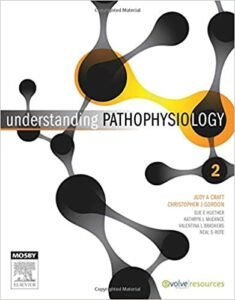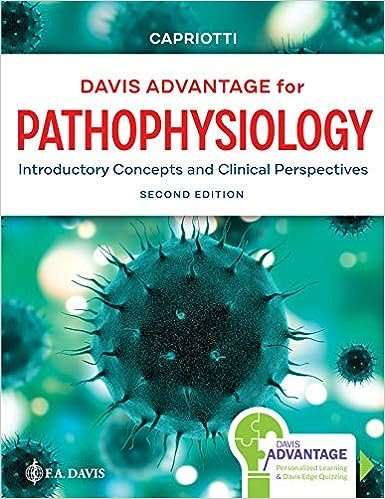Test bank for Goulds Pathophysiology For The Health Professions 6th Edition
Chapter 06: Infection
Test Bank
MULTIPLE CHOICE
1. Bacteria that form an irregular cluster of spheres are called:
a. bacilli.
b. diplococci.
c. staphylococci.
d. streptococci.
ANS: C REF: 89
2. A strict anaerobe requires which specific environment?
a. A dry environment
b. An acidic medium
c. Air at a temperature less than 61 F/16 C
d. The absence of oxygen
ANS: D REF: 89
3. The presence of the bacterial capsule:
a. aids in the release of endotoxins.
b. protects the microbe from phagocytosis.
c. increases the release of toxins and enzymes.
d. prevents replication of the bacterium.
ANS: B REF: 90
4. Microbial mutation means that:
a. genetic information has changed.
b. pathogens become nonpathogens.
c. the microbe survives adverse conditions but can no longer replicate.
d. the immune response to that microbe is strengthened.
ANS: A REF: 101
5. A bacterial endospore can:
a. also be classified as an acid-fast bacterium.
b. exist in latent form inside a host cell.
c. reproduce very rapidly.
d. survive high temperatures and a dry environment.
ANS: D REF: 96
6. The structure of a virus includes:
a. a cell wall and membrane.
b. metabolic enzymes for replication.
c. a protein coat and either DNA or RNA.
d. a slime capsule and cilia.
ANS: C REF: 92
7. What method do viruses use to replicate?
a. Binary fission
b. Budding of a daughter cell from the parent viral cell
c. Producing reproductive spores
d. Using a host cell to produce and assemble components
ANS: D REF: 92
8. A retrovirus such as HIV contains:
a. RNA and enzymes for its conversion.
b. a double strand of DNA.
c. many enzymes to limit budding of new virions.
d. numerous mitochondria.
ANS: A REF: 92
9. How do antiviral drugs act?
a. They interfere with cell wall development.
b. They decrease cell membrane permeability.
c. They destroy new, immature viral particles.
d. They reduce the rate of viral replication.
ANS: D REF: 107
10. Which statement applies to yeasts?
a. They are usually considered to be pathogenic.
b. They seldom contain a distinct nucleus.
c. They may cause opportunistic infection in the body.
d. They are normally not found in large numbers in resident flora.
ANS: C REF: 96










Reviews
There are no reviews yet.